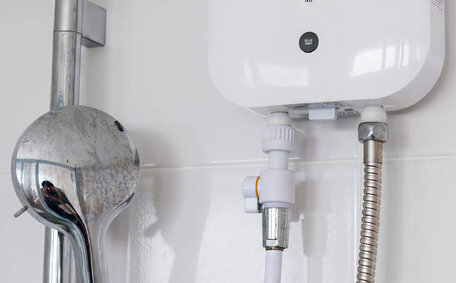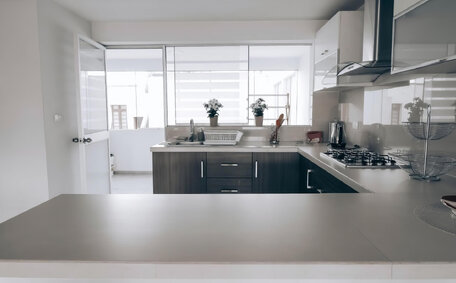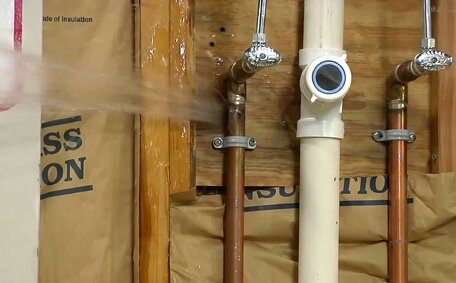Introduction to Baking Soda and Vinegar
Vinegar and baking soda are widely used as DIY cleaning solutions. Baking soda, as a mild alkali, lifts stains and vinegar, being mildly acidic, cuts through grease and limescale.
When combined, these two ingredients undergo a chemical reaction that produces carbon dioxide gas. This fizzing reaction is why vinegar baking solutions have gained popularity as homemade cleaners. The bubbles are believed to help lift dirt and grime more effectively than the ingredients on their own.
Yet, there are misconceptions about mixing baking soda with vinegar for cleaning that need addressing.
Although vinegar and baking soda create turbulence and can address some stains, they aren’t always superior to other cleaners. Understanding their uses and limits is key to effective eco-cleaning.
Chemistry Behind Baking Soda and Vinegar
Baking soda, or sodium bicarbonate, is a mild alkali which, when dissolved in water, forms a weakly alkaline solution with a pH level around 8.
Distilled white vinegar mainly comprises acetic acid, a mild acid with a pH ranging between 2 and 3.
When baking soda and vinegar are mixed, an acid-base reaction occurs. When vinegar and sodium bicarbonate (baking soda) mix, they form carbonic acid, which decomposes into carbon dioxide gas, water, and sodium acetate.
The equation for this reaction is:
Acetic acid (vinegar) + Sodium bicarbonate (baking soda) → Carbonic acid → Carbon dioxide (bubbles) + Water + Sodium acetate
This chemical reaction releases carbon dioxide gas, resulting in fizzing that may help remove soap scum and stains naturally.
Despite lacking the intense pH of stronger chemicals, the modest nature of the baking soda and vinegar mixture gently loosens dirt, with the agitation from the fizzing bubbles aiding in the cleaning process.
Effective household cleaning with baking soda and vinegar necessitates an understanding of their strengths and limitations to ensure proper application.
Ideal Ratios for Cleaning Reactions
Adhering to proper ratios is essential for optimal cleaning with baking soda and vinegar. Here are guidelines to maximise the reaction:
- Drain cleaning - Remove stubborn clogs and clean vinegar deposits by pouring one cup of baking soda down the drain, followed by boiling water, and then one cup of vinegar. The heat quickens the reaction.
- Toilet bowl cleaner - Sprinkle 1⁄4 cup of baking soda in the bowl, wait a few minutes, then pour in vinegar for a reactive clean.
- Oven cleaner - Make a paste with two tablespoons of baking soda and warm water to cut through stubborn grime. Apply and let it bubble for 5-10 minutes.
While the fizzing and bubbles are apparent during these reactions, the effectiveness emerges more from mechanical action on the surface than the mixed chemicals for a clean vinegar baking result. Find out what cleaning methods are effective by understanding that the true power lies in the original acidic and basic solutions before they neutralise each other.
Ensuring correct proportions is crucial to utilise the brief window of cleaning action. Imbalanced mixtures can reduce cleaning effectiveness.
Household Cleaning Applications
Used alone or in combination, baking soda and vinegar are effective in various household cleaning tasks. Here are several ways to use baking soda and vinegar effectively:
Baking Soda
- Fridge odours - Tackle unwelcome smells with a clean baking soda approach in your fridge by placing an open box inside for a refreshing scent.
- Oven cleaner - Form a paste with baking soda and water, apply it to your oven surfaces, allow it to sit, then scrub and rinse off.
- Kitchen sink scrub - Apply baking soda to your kitchen sink with a damp sponge for a scrub that leaves surfaces looking refreshed and spotless.
- Washing machine enhancer - Enhance your laundry routine by adding about 1⁄2 cup of baking soda to your detergent, improving stain removal and softening fabrics.
Vinegar
- Home disinfectant - Mix equal parts vinegar and water in a spray bottle for a home disinfecting solution. Apply to countertops, sinks, and other surfaces.
- Glass cleaner solution - Mix 1 part vinegar with 2 parts water in a spray bottle for a solution ideal for removing hard water stains and achieving a streak-free shine on glass surfaces. Spritz onto windows and mirrors and then gently wipe away for an impeccable sheen.
- Shower head cleaning - For a clean shower head, immerse it in pure vinegar to dissolve mineral deposits effectively.
Baking Soda and Vinegar
- Bathroom sink drain cleaner - Pour a half cup of baking soda down the bathroom sink drain, followed by vinegar, to clean effectively.
- Clean toilet easily - Sprinkle baking soda into the bowl vinegar then spray vinegar over top. Let bubble for 5 minutes before scrubbing.
While hard water in Sydney can cause limescale buildup, vinegar, in combination with baking soda, can help dislodge deposits through their joint fizzing action. For best results and to prevent buildup, apply baking soda followed by vinegar to start the reaction.
Common Cleaning Myths
There are some common misconceptions which can even undermine their efficiency when it comes to using baking soda and vinegar as cleaning agents:
- Myth 1: The fizzing from baking soda and vinegar cleans more effectively. However, when the substances neutralise, their lifting power lessens, rendering just the mixture minimally effective.
- Myth 2: Increasing the amount of vinegar to enhance fizzing does not correlate with better cleaning. Excessive baking soda or vinegar can hinder the reaction. The correct ratio ensures a more effective fizzing action.
- Myth 3: Baking soda and vinegar can fix any clog. While helpful for minor sink or drain issues, the fizzing effect may not be enough for more stubborn clogs or buildup. Stronger chemical drain cleaners are better suited for those scenarios.
- Myth 4: It’s benign for all surfaces. Several materials, including marble, granite, and stainless steel, may be compromised by the subtle acidity of vinegar or the grit of baking soda. Always spot test on an inconspicuous area first.
- Myth 5: It removes all stains. Baking soda and vinegar work well on certain organic stains and soils. But rust, grease, mould and dye stains require more powerful cleaners tailored to break down those molecules.
Considering their capabilities, baking soda and vinegar are practical for light-duty cleaning, but it’s essential to recognise their limitations for realistic results. I decided try using this DIY combo to enhance the cleaning capabilities, in conjunction with stronger degreasers, disinfectants, or commercial solutions.
Assess your cleaning needs and complement them with a variety of products, including vinegar and baking soda, as part of an eco-friendly cleaning regimen. A diverse toolkit full of cleaning baking soda methods allows you to tackle more stubborn dirt. Targeting grime with the right solutions avoids waste from repeated applications of an ineffective mixture.
Limitations and Precautions
While baking soda and vinegar can be useful cleaners, it’s important to understand their limitations:
- Not for all surfaces - Avoid using this mixture on natural stone like marble or granite. The acidity can damage surfaces. Spot test first.
- Not strong enough - Severe clogs or extensive buildup require stronger chemical cleaners rather than relying solely on baking soda and vinegar.
- Handling irritation - Wear gloves when handling pure vinegar or baking soda. The acidity and abrasiveness can irritate skin over time.
- Reacts with other cleaners - Don’t mix vinegar or baking soda with bleach, hydrogen peroxide or ammonia cleaners. This can create toxic chlorine or other irritant gases.
It is important to consider the following safety measures:
- Use in a ventilated area - The carbon dioxide created from the reaction can displace oxygen if used excessively indoors.
- Avoid inhaling - Do not breathe in the fumes during cleaning. The gases released can irritate airways.
- No ingestion - Keep baking soda and vinegar out of reach of pets and children. Consuming can cause gastrointestinal issues.
- Storage set up - Store baking soda in an airtight container and vinegar in a sealed bottle to maintain their potency. This prevents degradation and evaporation over time.
For complex plumbing jobs like recurring clogs, extensive limescale buildup or blocked main lines, contact the professionals at Bexley Plumbing on 1300 349 338. Our licenced, bonded and insured plumbers have the high-powered equipment and expertise to tackle problems beyond basic household remedies.






